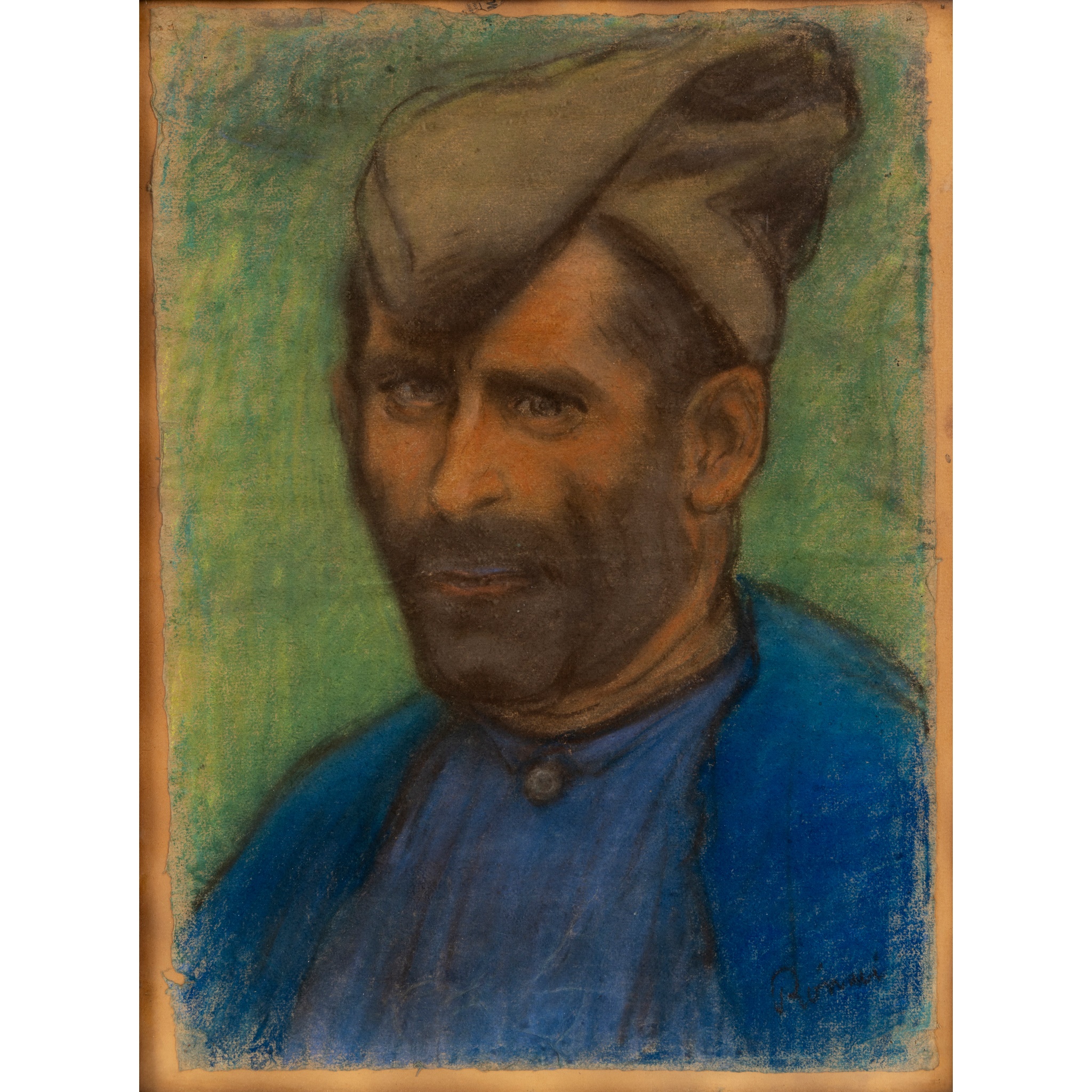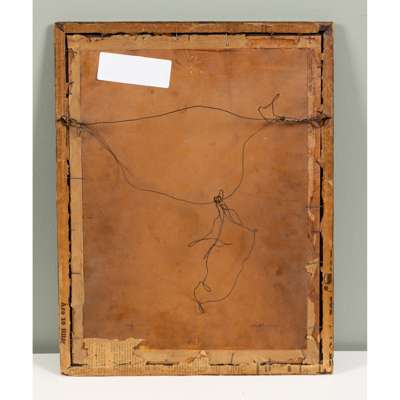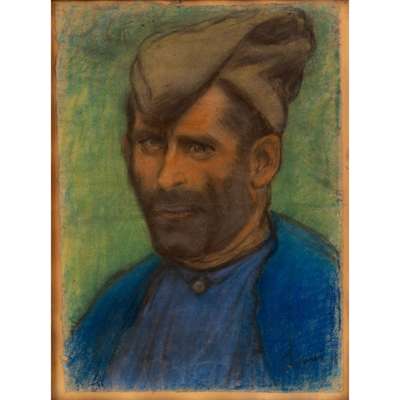
Lot 36

József Rippl-Rónai (Hungarian 1861-1927)
Portrait of a Young Man Wearing a Cap








Auction: 27 October 2023 from 11:00 BST
Description
signed (lower right), pastel on paper
Dimensions
43cm x 31.5cm (17in x 12 3/8in)
Provenance
Provenance
Private Collection, London.
Footnote
‘The Hungarian Nabi’: József Rippl-Rónai (1861–1927)
József Rippl-Rónai’s lifetime work can be seen as an important articulation of a pan-European approach that incorporated elements of Art Nouveau, Fauvism, Expressionism and in particular the Post-Impressionist painters known as Les Nabis. Born in Kaposvár, Hungary in 1861, he studied at the Akademie der Bildenden Künste in Munich in 1884, before moving to Paris in 1887. There he continued his studies under the Hungarian Realist painter Mihaly Munkácsy then living in the French capital.
By 1889 Rippl-Rónai made a brief visit to Pont Aven and soon cut ties with his earlier style embracing a new aesthetic buoyed by Paul Gauguin and his circle. He became friends with artists such as Aristide Maillol, Pierre Bonnard and in particular Édouard Vuillard whom he met at the Académie Julian in Paris. He joined the Nabis, whose influence can clearly be felt in his work.
Rippl-Rónai returned to Hungary in 1902 and the current work dates from this early period back in his homeland, but continues to bear the impression of the Nabis, with a gentle intimacy and a fondness for decoration. Possibly a self-portrait, the painting is dated to 1905 and communicates his interest in materials and clothing. He believed that not only was the artist’s full body of work of importance, but also his public persona and mode of living, including the way he dressed. Rippl-Rónai’s Post-Impressionist tendencies, including his use of two-dimensional representation and contouring, continues with this portrait, as well as his playful use of a painting within a painting motif, a technique that can be seen in a number of his important works.
The artist took part in public life throughout his career, including designing posters and tapestries and contributing to many successful exhibitions both at home and abroad, including those mounted in his home town of Kaposvár. Indeed, the current work bears the remains of a label which suggests an exhibition held there, which might relate to his solo shows of 1905 or 1913. After the World War One, Rippl-Rónai gave up oil painting in favour of pastels and his mastery of this medium reached its pinnacle with a series of portraits of literary friends. Rippl-Rónai’s continuing importance is that he succeeded in remaining a Hungarian artist who was faithful to his historical roots, whilst embracing modern art tendencies from his close associations with French artists linked to Paris at the turn of the century.







